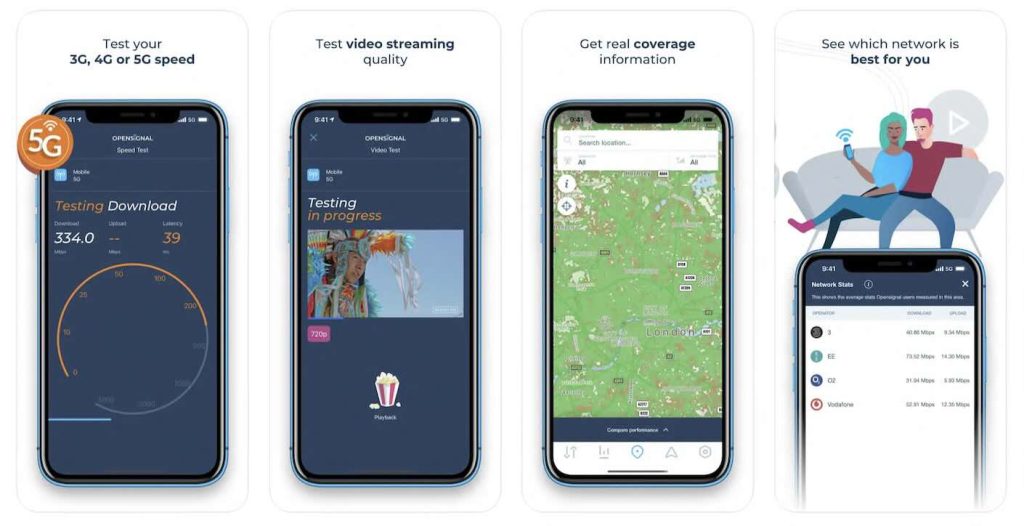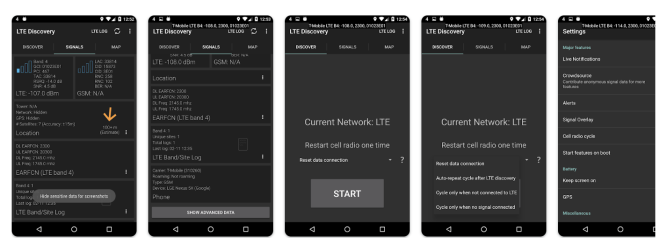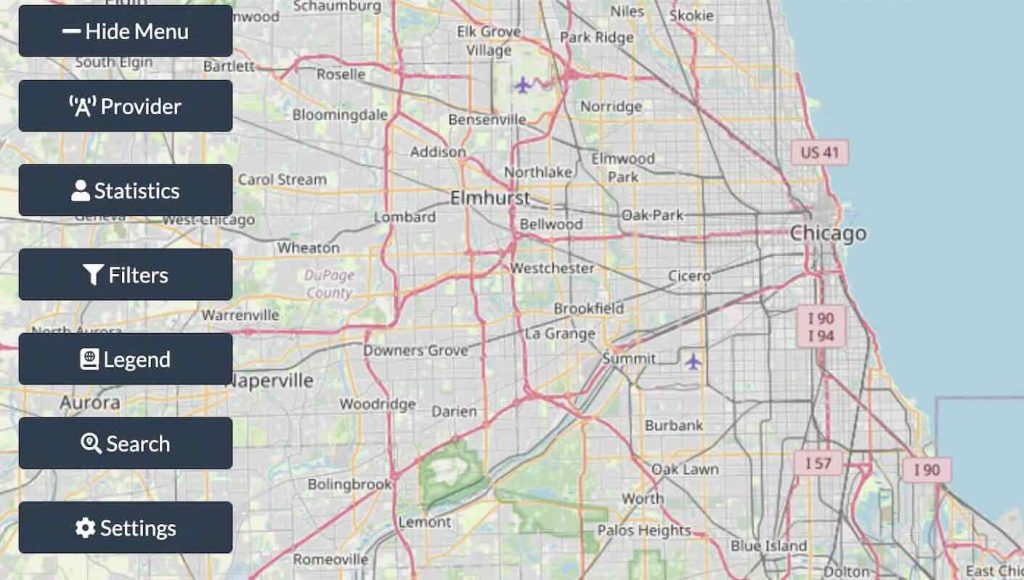
If you’re struggling with weak cellular signals or considering installing a signal booster, pinpointing your signal strength and finding nearby cell towers is crucial. Thankfully, several apps can help you measure your signal strength and locate cell towers, ensuring you get the best possible reception. Here’s a few apps we recommend for this purpose and why they are beneficial.
Why Use Signal Strength and Cell Tower Locator Apps?
Using these apps can help you:
- Identify weak signal areas in your home or office.
- Find the best location for installing a signal booster or antenna.
- Troubleshoot connectivity issues by determining if they are related to your signal strength.
- Ensure you’re getting the best possible reception from your carrier.
Factors Involved in Testing Signal Strength
- Signal Strength (dBm):
- Measures the power level received by your device. Lower negative values (closer to zero) indicate a stronger signal.
- Signal Quality (SINR/RSRQ):
- Shows the quality of the signal. Higher values indicate better quality, essential for stable connections.
- Frequency Bands:
- Different frequencies are used by carriers. Knowing which bands are stronger can help in choosing the right booster or antenna.
- Cell Tower Locations:
- Knowing the nearest towers can help in positioning antennas or boosters for optimal signal reception.
Top Apps for Testing Signal Strength and Finding Cell Tower Locations
1. OpenSignal

Platforms: iOS, Android
OpenSignal is a powerful and user-friendly app designed to provide detailed information about your mobile network performance. It offers insights into signal strength, cell tower locations, and network speed, making it an essential tool for conducting a cellular site survey and optimizing your signal.
Pros:
- User-friendly interface.
- Provides detailed signal strength maps and cell tower locations.
- Includes network speed tests.
- Available on both iOS and Android.
- Crowdsourced data ensures accuracy.
Cons:
- Requires location services to be enabled, which can impact battery life.
- Some advanced features may require a data connection.
Why It’s Beneficial:
OpenSignal is an excellent tool for anyone looking to improve their cellular signal. By providing detailed information about signal strength and cell tower locations, it helps users conduct thorough cellular site surveys and identify the best spots for installing signal boosters or antennas. Additionally, the network speed tests and coverage maps offer valuable insights into network performance, making it easier to troubleshoot connectivity issues and ensure you’re getting the best possible reception.
2. Network Cell Info Lite

Platforms: Android
Network Cell Info Lite is a comprehensive app that offers detailed information about your mobile network, including signal strength, cell tower locations, and network information.
Pros:
- Detailed real-time signal strength readings.
- Displays cell tower locations on a map.
- Provides information on signal quality and network data.
Cons:
- Android only.
- Ad-supported free version.
Why It’s Beneficial: Network Cell Info Lite is perfect for users who need detailed insights into their mobile network. It provides comprehensive signal strength data and cell tower locations, making it easier to find the best spots for signal boosters.
3. LTE Discovery (5G NR)

Platforms: Android
LTE Discovery is designed to provide users with detailed information about their LTE signals, including signal strength and cell tower locations. It helps identify signal issues and find the best location for improved reception.
Pros:
- In-depth LTE signal information.
- Cell tower locator with map view.
- Supports various network types.
Cons:
- Android only.
- Can be complex for non-tech users.
Why It’s Beneficial: LTE Discovery is ideal for those who primarily use LTE networks. It provides detailed insights into LTE signal strength and tower locations, helping users find the best spot for signal boosters and antennas.
4. Cellmapper

Platforms: iOS, Android, Web-based
Cellmapper provides detailed maps of cell towers and signal strength data. It’s a community-driven app that offers extensive information about cell towers around the world.
Pros:
- Extensive cell tower database.
- Detailed signal strength maps.
- Available on multiple platforms.
Cons:
- Requires user contributions for data accuracy.
- Can be overwhelming for new users.
Why It’s Beneficial: Cellmapper is ideal for users who need detailed and accurate information about cell towers. It’s a powerful tool for optimizing antenna and signal booster placement.
What If I Can’t Use An App?
Finding Signal Strength on Your Android or iPhone Without an App
If you prefer not to use an app, you can still measure your signal strength using the built-in field test mode on your phone. Here’s how to do it on both Android and iPhone devices:
How to Find Signal (dBm) Readings on Your iPhone
The field test mode on iPhones can vary by version, but the following steps should work on most iOS systems. Note that it may not work on every phone:
- Open the Control Center or go to the Settings app and turn off WiFi.
- Open the Phone app and dial *3001#12345#*
- Press call, and you will see the Field Test menu.
- Find the RSRP number, which shows your signal strength.
If this method doesn’t work, your phone may not support field test mode.
How to Find Signal (dBm) Readings on Your Android
Field test mode on Android varies by phone model and OS version, but you can generally find it under the Settings menu:
- Tap Settings.
- Tap About Phone.
- Tap Status or Network.
- Tap SIM Status.
- Your dBm reading is under Signal strength.
Once you have your signal measurement, walk around inside and outside the perimeter of your home to test your signal. Keep in mind that the closer this negative number is to 0, the better the signal. Ideally, you want something better than -108 dBm as anything worse could be unstable or unusable.
Tips for Accurate Signal Strength Testing
- Open Environment:
- Ensure there are no large metal objects or electronic devices that could interfere with the signal during testing.
- Test at Different Locations:
- Move around your home or office to find the areas with the strongest signals. This will help in identifying the best spots for placing signal boosters.
- Test at Different Times of the Day:
- Signal strength can vary throughout the day due to network congestion. Test at different times to get a comprehensive view of your signal quality.
- Use Multiple Devices:
- Test signal strength on various devices to ensure consistent results across all your gadgets.
- Update Your Apps:
- Make sure your signal testing apps are updated to the latest versions to benefit from new features and improved accuracy.
Regularly testing your signal strength and knowing the locations of nearby cell towers can help you optimize your cellular reception. Whether you need detailed insights or a simple solution, there’s an app on this list to meet your needs. Try a few different options to get a comprehensive view of your signal performance and improve your connectivity.

